Women’s movements in India have had a contested and debated history of women’s struggles articulating their politics from different positions in a hierarchical caste society. The political spectrum of feminist articulation in Indian society can be seen, ranging from Durga Vahini‘s likes, the women’s front of the RSS, to the autonomous women’s groups who felt disillusioned with the patriarchy with their communist male counters parts.
Dalit, Bahujan, Adivasi, Nomadic and Muslim women have also broken away from the Women’s movement in India, which upper caste women have historically dominated.
Historically, women have stepped out of organised politics to highlight the rampant patriarchy and male dominance within organised politics. Similarly, Dalit, Bahujan, Adivasi, Nomadic and Muslim women have also broken away from the women’s movement in India, which upper caste women have historically dominated. They have rarely discussed brahmanical patriarchy’s contours while also further subjugating the voices of doubly andtriply oppressed women.
Also read: Social Media Influencers: Serving Classism, Selective Feminism & Monolithic Nationalism
Historicising Women’s Movement in India
The history of colonial India is constrained to the nationalist discourse, so much so that almost all political discourse during colonialism could be understood and articulated by discussing the nationalist struggle against British colonialism. Various historical accounts have the nationalist struggle as the central subject of the discourse. Nationalist historiographies have subsumed various political struggles and reserved their positions as a dominant discourse on understanding the assertion of resistance in the early nineteenth and twentieth centuries.
However, in the process of assimilation, this discourse has refrained from articulating the discourse of the Bahujan masses who organised and participated in various political struggles against colonialism and the dominant forces of what we now know as India. While noting the same, Sharmila Rege writes, “Nationalist political discourse excluded the radical pro-democratisation and anti-hierarchical struggles of the lower caste masses and refrained from encapsulating and aligning with anti-colonial nationalism.”
Feminist historiographies made radical breakthrough by bringing out the hidden histories of women’s articulation of experiences of gender and patriarchy from under the garb of paternalistic and patriarchal ‘social reforms’. These historiographies have rejected the reformist movements of the White and its Indian ally, the Savarna man.
The Brahmo Samaj and the Arya Samaj‘s reformist movements and their likes, along with the legislative pronouncements like the abolishment of Sati by the colonial rule, were projected as an active engagement to liberate the ‘Indian woman’. Lata Mani argues that both groups were redefining tradition and, therefore, “Indianness”. Women were “neither the subjects nor the objects” of this discourse, but merely the “site” on which the debates were conducted.
Also read: Why Do Savarna Right-Wing Women Betray Women?
Rassundari Devi’s autobiography brought out the abject conditions of the arduous labour that engulfed the women’s life. “I was so immersed in a sea of housework that I was not conscious of what I was going through day and night. After some time, the desire to learn how to read properly grew very strong in me. I was angry with myself for wanting to read books. Girls did not read… People used to despise women of learning… In fact, older women used to show a great deal of displeasure if they saw a piece of paper in a woman’s hands. But somehow, I could not accept this.”, writes Rassundari Devi.
Feminist historians claim that this was one of the first autobiographies written by women and is seen as a pioneering text for feminist struggles in India. However, these histories speak about the conditions of the women of upper-caste households and women’s laborious lives constrained to the domestic realms in upper-caste realities. “While these democratising movements are seen as heralding ‘class rights for women’ as ‘against and over’ simply familial or caste- related identities; the histories of the non-brahman democratic movements, ever so crucial to the emancipatory discourse on caste and gender come to be overlooked“, writes Sharmila Rege pointing out the same.
Upper caste and upper class women were engaged in constant domestic labour. However, traditional patriarchalism was not true of lower caste women who had to engage in labouring domestic work along with the labour they produced outside their homes in the fields and villages.
Gail Omvedt in the book Caste, class, and women’s liberation in India, writes,”Indian peasants, with little property to pass on and little chance of attaining any status recognition, were not so concerned with patrilineal blood purity or caste standards; their women of necessity played a greater economic role and with this attained greater independence; and the bhakti movements which found their basis in the lower castes and peasantry gave women, as well as untouchables and Shudras, greater religious roles.”
Writings by Mukta Salve and Tarabai Shinde of the Satyashodhak tradition highlighted the graded patriarchies in a caste society and discussed male violence in the contexts of caste.
During early colonialism in the 1800s, the Satyashodhak movement led by Jyotiba Phule and Savitrimai Phule rarely appeared in the historical texts of feminist struggles. Phule, an anti-caste leader, believed that Brahmanism and violent Hinduism enslaved women, Bahujan and Dalits. He saw imparting knowledge in historically excluded communities as a radical liberatory assertion against Brahmanism. With this view, he went on to open a school for women, Dalits and Bahujans who were denied the right to get an education as inscribed in the Hindu scriptures. He also worked with women enforced into widowhood.
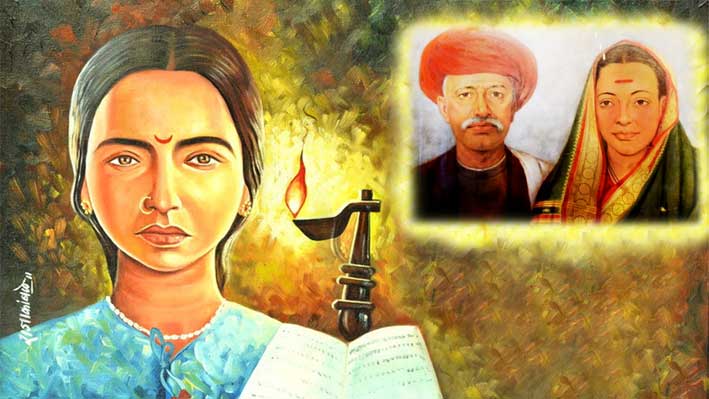
Women’s writings from the Satyashodhak tradition did not enter the history of women’s movements. Writings by Mukta Salve and Tarabai Shinde of the Satyashodhak tradition highlighted the graded patriarchies in a caste society and discussed male violence in the contexts of caste.
Also read: The Modern Savarna And The Caste-Is-Dead Narrative
The subaltern school of thought has also written on the women’s question and rendering her from participation in the political realm for nationalist struggle into the domestic realm. Partha Chatterjee, a leading historian in later colonial studies, has discussed the patriarchal alignments of the later colonial period where the women’s participation in the political struggle were seen in binary oppositions of the public and the private. Chatterjee argues that the women’s question that had gained precedence in the 19th century lost its momentum in the 20th century as the Nationalist movement came to the forefront and did not see the women’s issues challenge to the colonial State.
Rege argues that this blanket presumption failed to see women’s en masse participation in the Mahad struggle led by Ambedkar and his followers. While discussing the resolution of the women’s question, Chatterjee overlooked the contributions of the struggles led by Bahujan women during the 20th century. “The early decades of the 20th century saw protests by ‘muralis’ against caste-based prostitution in the campaigns launched by Shivram Janoba Kamble. The 1930s saw the organisation of independent meetings and conferences by Dalit women in the Ambedkarite movement.” . Independent Dalit women’s conferences and Parishads also came to be organised during this time.
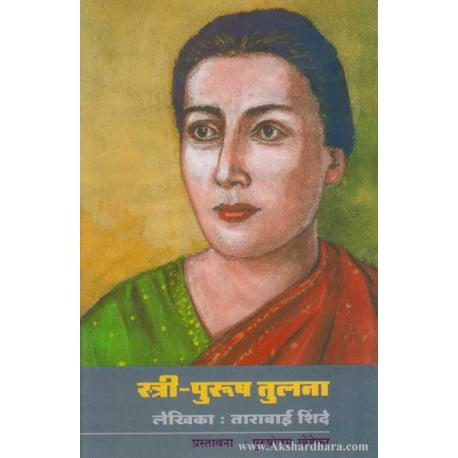
New Women’s Movement
A wave of feminist movement came to be materialised in India in the 80s. The women’s front of the Left parties were discontent and disillusioned with the Left ideologues’ masculinities. The Leftists had a tendency to subsume the women’s question into the category of class and refused to ask questions about the unique subjugated experiences of women within the working-class struggle.
Dalit feminists critiqued the non-Dalit feminist position on sex-work and bar dancing which finds its deep linkages with castes’ history, sexuality and labour. They highlighted how they were lamented by the non-Dalit feminists about choosing between feminism and community.
They disassociated from the Left movement and came to form autonomous women’s front with gender as the focus of their political struggle. However, Dalit Bahujan women have not found a place in these autonomous movements as they felt alienated and dominated by the upper caste discourse of experiences and claim to womanhood. This is referred to as the Savarnaisation of womanhood that the entire experience of womanhood came to be imagined from the Savarna perspective of upper-caste women.
Also read: The Hierarchies In The Women’s Reservation Bill, Feminist & Dalit Movements
Dalit feminists were highly discontent with the autonomous women’s groups dominated by Savarna women as they rarely extended solidarities with Dalit feminists’ groups in specific cases of caste-based sexual violence. This is particularly true of the complete silence of the women’s groups in the Khairlanji massacre. They also critiqued the non-Dalit feminist position on sex-work and bar dancing which finds its deep linkages with castes’ history, sexuality and labour. They highlighted how they were lamented by the non-Dalit feminists about choosing between feminism and community.
These positions of the non-Dalit feminists were alienating for the Dalit Bahujan women within the feminist struggles. Savarna feminists deem these differences and political articulation as a ‘deep cleavage’ in the feminist struggle; however, I disagree and contend that these articulations have pointed to the Brahmanism and domination of the privileged within the movement.
These articulations also posited an epistemological challenge to the feminist struggle. The politics of difference gain precedence over the unification of the women’s movement in India. Different women articulated their claim to womanhood from their social-economic positions, which threatened the imagined ‘women’s movement’ as a singular political struggle.
This trend is also reflected even in the most recent times. LOSHA, List of Sexual Harassers in Academia was made public by a Dalit woman scholar, Raya Sarkar. The extensive list made public through social media listed the names of the academics who were accused of sexual harassment. The list witnessed a massive backlash from the feminists by Nivedita Menon, Kavita Krishnan and other ‘veteran’ feminists from Delhi. They deemed the list as harmful and dangerous to the efforts of feminists who have worked with women on the issues of sexual violence and discussed the grave need to follow the ‘due process’.
However, it is to be noted that these women have repeatedly criticised the due process as becoming a tool to further subjugate and harass the victims of sexual violence by the State’s forces. Many criticised the list as a shield for the senior academics named in the list, which would ultimately question and challenge their positions in academics. This was also a clear portrayal of the brahmanical alliance of the academics. This was also a very patriarchal sight as women came ahead to protect and shield the ‘men’ of their communities while most men still continue to maintain their power in the status quo.
Also read: Leftist Dadas, “Faka Flats” And The Right-Wing Dilution Of Left Feminist Anger
The LOSHA also promulgated the much-celebrated #MeToo movement in India but rarely has it acknowledged the Dalit-Bahujan women’s mental, emotional and physical labour put in LOSHA. In fact, the #MeToo wave claims to have its genesis in the #Metoo movement in Hollywood dominated by White women. It is to be noted that the #MeToo movement was started by a Black woman Tarana Burke, who painstakingly started the movement to form a community support system of women who were survivors of racial sexual violence within the Black community.
More recently, many Dalit-Bahujan and Muslim women came out with the statement criticising Savarna women’s dominance in the ‘Pinjra Tod’ movement of Delhi. Pinjra Tod struggle is seen as a ‘mass-based’ movement against hostel curfews, regulation and policing of women’s bodies in the Universities in Delhi. Their statement highlighted that they felt completely isolated and alienated within the movement and experienced this deeply in the meetings.
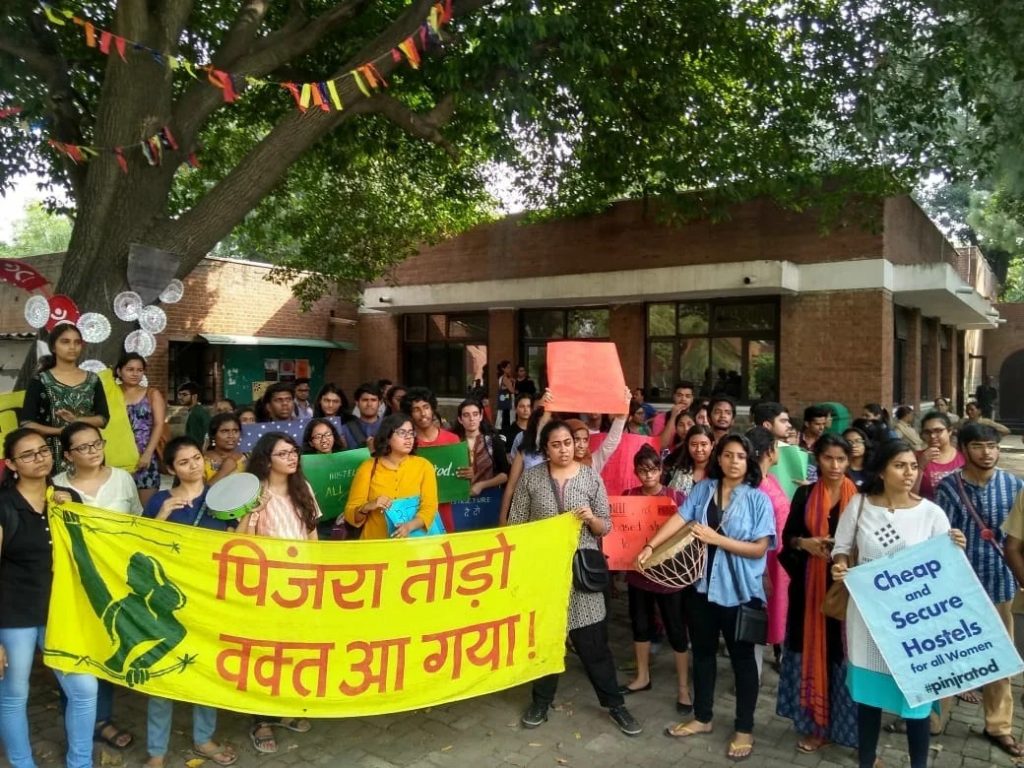
The Dalit Bahujan and Muslim women were rarely given any leadership. They would only be invited to speak or write statements on issues related to caste and communalism while strictly confining them to their caste identity. This is also a brahmanical control and regulation of the women’s body. They also highlighted how the issues of reservations in hostels or addressing issues of caste violence were always ignored in the meetings. The movement’s organising core committee was also dominated by upper-caste women and rarely saw any Dalit-Bahujan women leaders and organisers.
All this is to say that the movements cannot be seen as unified struggles. There are various power hierarchies and layers within the so-called category of woman. Instead, it is to be noted that a singular category of women is violent and hegemonic. It has to understand through the different layers of power assumed by the women with their intersectionality with caste, gender, sexuality, and race.
The claim to womanhood by cis-Savarna women is violent and exclusive. It has historically excluded the different and diverse experiences of womanhood and deemed these differences as fragmenting. But it is critical to note that the unity of the women’s movement is an imagined idea. The Savarna feminists imagine it to strive to unify differences and maintain their political power in political struggles centred around gender. It is the reification of the historical injustice done to the doubly-triply oppressed identities who struggle for social justice. However, it is essential to struggle against heteronormative Brahmanism, which can be possible by forming solidarities based upon the politics of difference and different experience of womanhood in Brahmanical Heteronormative Patriarchy.
Aabha Joshi is pursuing their Master’s from University of Mumbai from the Department of Sociology
Featured Image Source: Economic and Political Weekly
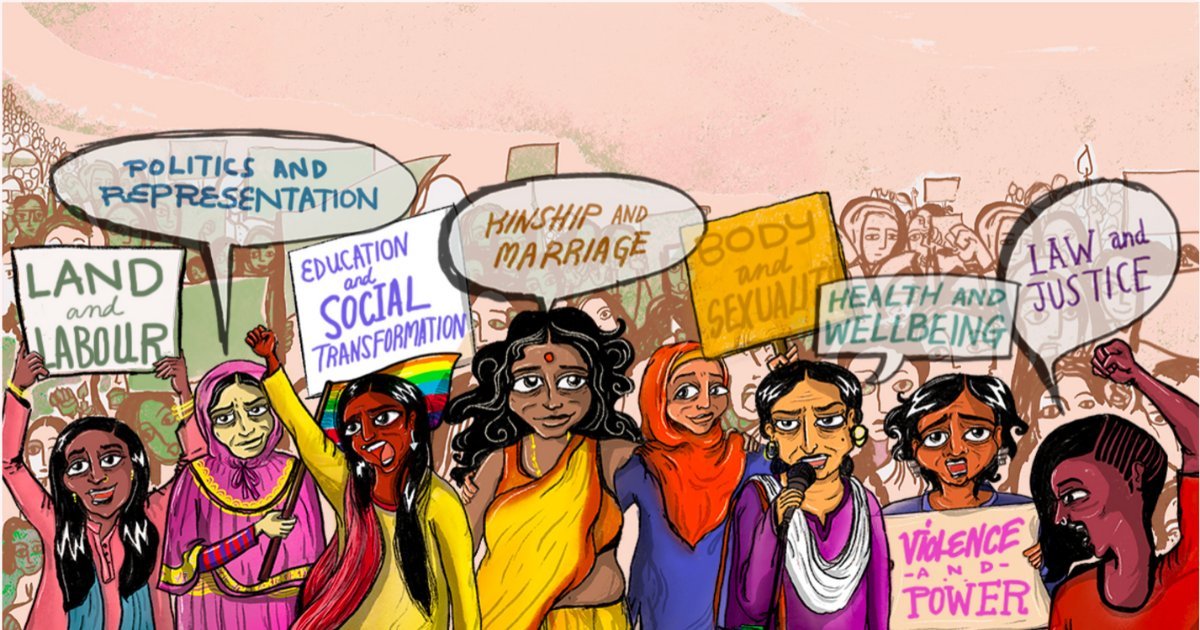


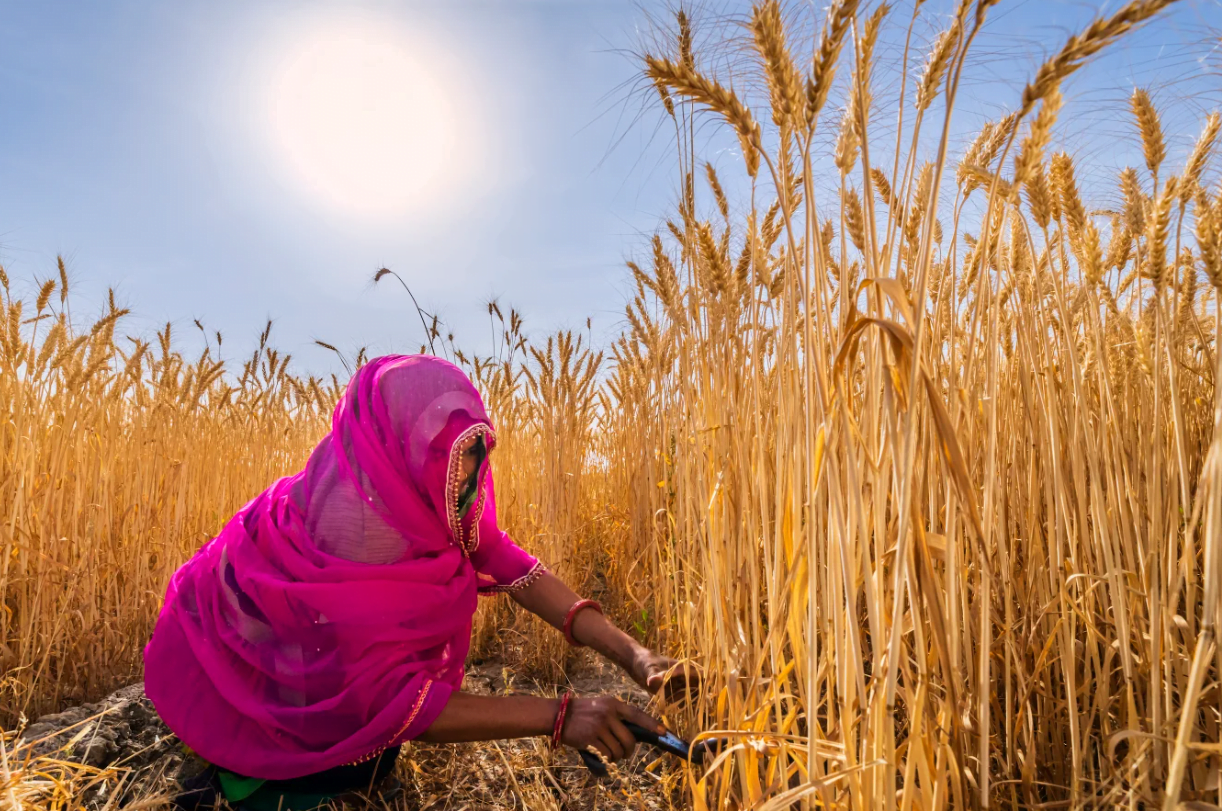

Ashraf Muslim women. Yes islam has caste in India and you very conveniently ignore it.